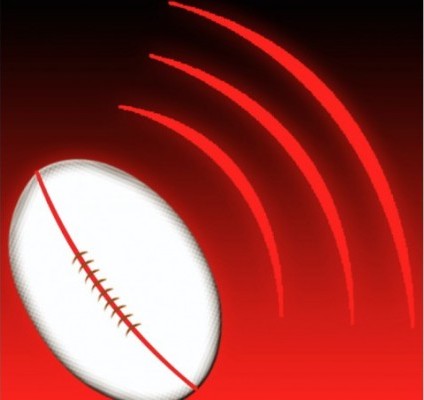Make Your Voice Heard on Youth and HS Issues
Make Your Voice Heard on Youth and HS Issues
This is an Opinion Column by Alex Goff - USA Rugby is soliciting thoughts and ideas from the American rugby populace about HS rugby eligibility and age breakdowns.
It seemed a good time, then to voice a few personal opinions. While I am not an expert in all of these aspects, I’ve been around a long time in youth and HS rugby. I’ve got some opinions on what people should say, and because of that I think it’s worth putting in my credentials:
I started playing tackle rugby at the age of 11. I played rugby and football in high school. I have coached boys and girls from the age of five to 19. I was an assistant coach on nationally-ranked boys HS teams, and then a Head Coach on nationally-ranked girls teams. I was manager and selector and program director for girls and boys age-grade select sides, and started the all-star competition that became the Great Northwest Challenge.
In addition, I’ve been talking to coaches and players of age-grade rugby for over 20 years. So I think I know a little bit about this.
Rocking the Vote
This request for input was, of course, soft-pedaled by USA Rugby, and so you might have missed the news. You need to tell them what you think. If you’re a coach or team administrator, or even a player, you need to let them know what is going on at your level, because if you don’t, then the decisions made in how the youth game is directed will be made without you.
Which Way the Wind is Blowing
Have a look at the current Youth Rule Variations produced by USA Rugby’s head of Youth & High School, Kurt Weaver. That will tell you what they want to do. Now, Weaver is a guy who deserves our respect. He’s smart, he cares about the game and about those who play it. He’s a good referee and has been at the coalface - having worked as the head administrator for Rugby Ohio before getting a job with USA Rugby.
However, he’s flat wrong with several of his ideas, including: full contact and playing unadulterated rugby only in 11th and 12th grade; 7-a-side and 10-a-side only for 8th grade and younger, and “best practice” recommendation that 7s be the sport for players in 9th and 10th grade.
There’s more. See details on how contact and rules are incorporated through kids’ ages. This is what they’re planning.
My Opinion
I grew up like a lot of kids in rugby countries (I was an American kid in England, watching rugby on TV and in person every weekend); I saw the skills and the style of play and I tried to emulate it. I learned to drop kick respectably at 11 and understood basics of tackling, mauling, scrummaging, and rucking at that age, too. And I played on a full-size field. Always.
Weaver’s plan, and it is his plan, takes the opinion that young rugby players can’t figure out those skills until they are older. It takes the opinion that contact should be carefully folded into rugby play and not played at full contact in all aspects until 11th grade.
It also suggests you should have the following until 11th grade: full-size fields, contested 8-on-8 (or even 5-on-5) scrums; 15-a-side rugby; more than one player from each side in a ruck.
This is, in short, ridiculous. To tell 15- and 16-year-olds that they can’t learn the crucial team aspects of the scrum or the ruck hurts development of the game. To teach kids that the game is 5-on-5 or 7-on-7 on a small field when it’s not anything like that around the world is wrong.
If you agree with me, go here and make you opinion known.
Regional Cup Tournament Structure
This is another topic on which I differ from Weaver. As was documented this past spring, Weaver’s opinion is that players who are in 9th and 10th grade should not, under any circumstances, play on a varsity-level all-star team, even if that player is the best player in the state, or plays for the USA U20 team.
This doesn’t make any sense to anyone who has seen young people develop in sports. Sometimes an older player still needs time, and sometimes a younger player is ready now. The JV/Varsity rule this past year decimated the girls all-star ranks, because many regions didn’t have enough players in the right grades to fill out one team.
The rule, while well-intentioned, hurts the game. And if you talk to anyone who is an expert in high performance and elite athlete development (which Weaver is not), you would hear that age isn’t the only measurement of how ready a player is to move up.
And of course, this is all silly, because USA Rugby’s documentation says nothing about age, and all about grade level. So an athlete who is good in school and a senior at 17 can play with the big boys or big girls, but an athlete who started kindergarten late and is 17 as a sophomore is not allowed to.
I’m not being alarmist in saying that something has to be done to change these approaches. Look at the form, and you’ll also see how Weaver has slipped in the concept of “Travel Club” to define a HS rugby team that is not a single-school team. That’s been his stated goal for a long time, and we shouldn’t let him define it that way. Why? Because it’s not his to define. (It also dilutes all-star play, and while the expansion of all-star tournaments to include non-state teams I think is a good thing, changing them to basically club leagues undercuts the point.)
Contact and more complex aspects of play can be taught to kids at a younger age that defined by the Bronze-Silver-Gold system. Teaching young kids these concepts helps instill proper technique and understanding before they get bad habits from football or other sports. Asking more of kids is a good thing.
Not teaching any aspects of tight five play until an athlete is a junior in high school is unsafe, and also excludes players. You’re not going to get your hooker and prop types if there’s no place for them. Playing rugby on a 30-x-50 field doesn’t teach the open running or fitness requirements of the game, and will make playing on a full-size field later a very unpleasant proposition. Dividing the game into short quarters doesn’t teach you how the game is played.
On the elite level, making decisions about how all-star teams should pick their players is just flat wrong. If you want to instate a waiver system for young players playing up, then do so. And at the very least, stop talking about grade, and start talking about age.
So, people, it’s time to vote. Time to do a little research, and tell USA Rugby what you think. Send me what you send them, also. I’d love to see if you agree, or not.
Make your voice heard here.
https://docs.google.com/forms/d/e/1FAIpQLScleYrttngrcaUKI_X_1xt7TazLm1qL...











